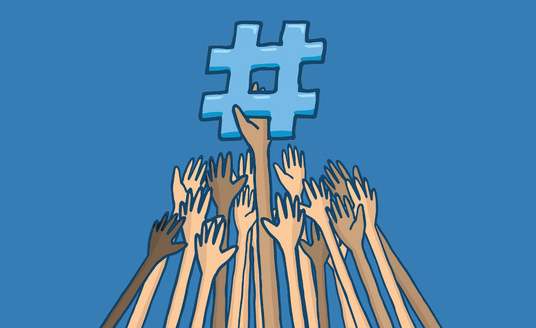And Make Them Work For You!
If you have been guessing at your hashtags on your social media marketing posts and hoping for the best– or worse, you don’t even know the potential benefit of hashtags at all– you need to know that they could be getting you great results, if only you use them correctly. This starts with knowing the reasons to use hashtags, and also includes knowing how to create them as well as the right number to use on each specific platform. Armed with this knowledge, you can expect to see increased engagement across your social media platforms almost immediately.

Why Use Hashtags?
Hashtags are important because they are used to identify and categorize specific topics by turning any word or phrase (without spaces) into a searchable link simply by adding the hashtag (#) before it. For example, if your post is about mountain biking, you can use the hashtag #mountainbiking and it will be hyperlinked, meaning that users can click on that hashtag and find more posts on the same topic. That post will then also appear in searches that include the term #mountainbiking. Using hashtags is an easy way to increase the reach of your posts, because it means that your post can be easily discovered by anyone using or searching the same hashtag.
How to Choose and Create Hashtags
Rather than choosing hashtags off the cuff each time you post, simplify the process by creating a working list of hashtags that you can refer back to at any time. When you post, you can simply copy and paste your hashtags from this list, which I recommend formatting as a spreadsheet. Start by browsing the feeds of relevant businesses, organizations and influencers and taking note of the most common hashtags which apply to your company and services. Repeat this activity for each platform you use, including Instagram, Facebook and Twitter (LinkedIn does not use hashtags), and any time you come across a commonly used hashtag you can add it to the list.
Creating a new hashtag makes the most sense if it refers to a specific event or campaign you are hosting. When creating a hashtag, remember to keep it as short as possible— people are more likely to use it if they can add it to their tweets, and then still easily stay within Twitter’s 140-character limit. You may need to get creative with abbreviations to do so. Also, check that the hashtag is not already in use. Ideally, the hashtag you create will be brand new, but this can be difficult to achieve with new hashtags being created every day.
If you do need to use a hashtag that has been used already, the main points to consider before doing so are how long ago the hashtag was used, and what it was used for. If it has no recent history at all, and it was originally used for a purpose you feel okay about, you can go ahead and use it for your own purposes. However, if the original use clashes badly with your brand values, you may need to rethink the hashtag. Rearrange, use different words or try abbreviations to come up with something new. After all, the hashtag is a searchable link, and when they search your hashtag, not only will your posts come up, the old ones will as well.
Number of Hashtags Per Post
Each platform has its own ideal number of hashtags to attach to a post, and using the right number increases the chances that your post will be seen and that the right people will engage with it.
When posting on Twitter, the magic number is one to three hashtags — a number which keeps the tweet easily readable while still having the benefits of being usable as a search tool.
Instagram is where you can go hashtag-crazy. This platform allows up to 30 per post, and the ideal number is around 11. Keep them relevant, but have fun with them as well. Proper hashtags here can ensure that your photos will be seen by your target audience for months to come.
Hashtags are less important on Facebook, but for the best engagement results, use the top one or two most relevant options.
With a little bit of a time investment upfront and the knowledge of why and how to use hashtags, you should find that the hashtags you use really affect your levels of engagement.

